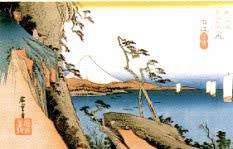![]() Wrapping up the Christmas shopping. Haven't had to visit a mall yet,
surprisingly. The local "Tower Records" was lacking, so I decided to
nip up to the City for a brief stop in "Amoeba" at the end of Haight
Street, as well as a longer mission into adjacent Golden Gate Park. That's
where I left the car, near the De Young Museum. As I walked east I
passed the Conservatory, that large greenhouse (with its whitewashed
windows) modeled after those in London's Kew Gardens. Ours has
been closed for almost a decade because of earthquake damage.
At the park's corner I admired an enormous Italian oak decorated
with strings of regular-sized colored light bulbs - like to see
this one at night! I crossed over Stanyon Street, leaving
the greenery and eucalyptus trees behind. At "Amoeba" I turned in
a few disks for credit, located the new Oranj Symphonette
<1> and
stood in the long line for purchasing, finally fleeing the crowds
to return to the foresty urban oasis. I found and walked through
that pedestrian tunnel decorated with stalactites I'd read about
in The Summer of Love by Lisa Mason, eventually returning
to the area of the museums. The De Young building is where the Asian
Art Museum lives - my destination.
Wrapping up the Christmas shopping. Haven't had to visit a mall yet,
surprisingly. The local "Tower Records" was lacking, so I decided to
nip up to the City for a brief stop in "Amoeba" at the end of Haight
Street, as well as a longer mission into adjacent Golden Gate Park. That's
where I left the car, near the De Young Museum. As I walked east I
passed the Conservatory, that large greenhouse (with its whitewashed
windows) modeled after those in London's Kew Gardens. Ours has
been closed for almost a decade because of earthquake damage.
At the park's corner I admired an enormous Italian oak decorated
with strings of regular-sized colored light bulbs - like to see
this one at night! I crossed over Stanyon Street, leaving
the greenery and eucalyptus trees behind. At "Amoeba" I turned in
a few disks for credit, located the new Oranj Symphonette
<1> and
stood in the long line for purchasing, finally fleeing the crowds
to return to the foresty urban oasis. I found and walked through
that pedestrian tunnel decorated with stalactites I'd read about
in The Summer of Love by Lisa Mason, eventually returning
to the area of the museums. The De Young building is where the Asian
Art Museum lives - my destination.
![]() They're having two shows of Japanese ukiyo-e prints - I misread
the exhibition poster, unfortunately. I thought it was all one show; now I
find I've missed the first one, which was dedicated to Hokusai. (They
had his "Great Wave" there, one of the "36 Views of Fuji" - am I to
never see a "real" print of this?) The current show is of Hiroshige, the
more prolific of this stuff's two great artists. They had all of his
"53 Stations of the Tokaido Road" as well as some of the best
of his "100 Views of Edo", including everybody's favorite
<2>, "Asakusa Rice Fields and Torinomachi Festival". The sample image seen here
They're having two shows of Japanese ukiyo-e prints - I misread
the exhibition poster, unfortunately. I thought it was all one show; now I
find I've missed the first one, which was dedicated to Hokusai. (They
had his "Great Wave" there, one of the "36 Views of Fuji" - am I to
never see a "real" print of this?) The current show is of Hiroshige, the
more prolific of this stuff's two great artists. They had all of his
"53 Stations of the Tokaido Road" as well as some of the best
of his "100 Views of Edo", including everybody's favorite
<2>, "Asakusa Rice Fields and Torinomachi Festival". The sample image seen here
 is one of those stations along the Tokaido Road, which
ran between Kyoto and Edo - the road is now the super-express
shinkansen Tokaido Line, which reduces the original
two-week journey to a couple hours.
<3>
The exhibit was exceptional, showing how the prints' colors were
built up - they even had one of the original wood blocks side-by-side
with a finished print. New vocabulary, gleaned from the small print:
bokashi and tembokashi are the gradual shadings of sky
color common in the landscape pictures - the former gets lighter going
up, the latter the reverse. The water-colory effect is created by washing
the ink off the plate. Find more Hiroshige ukiyo-e here.
is one of those stations along the Tokaido Road, which
ran between Kyoto and Edo - the road is now the super-express
shinkansen Tokaido Line, which reduces the original
two-week journey to a couple hours.
<3>
The exhibit was exceptional, showing how the prints' colors were
built up - they even had one of the original wood blocks side-by-side
with a finished print. New vocabulary, gleaned from the small print:
bokashi and tembokashi are the gradual shadings of sky
color common in the landscape pictures - the former gets lighter going
up, the latter the reverse. The water-colory effect is created by washing
the ink off the plate. Find more Hiroshige ukiyo-e here.